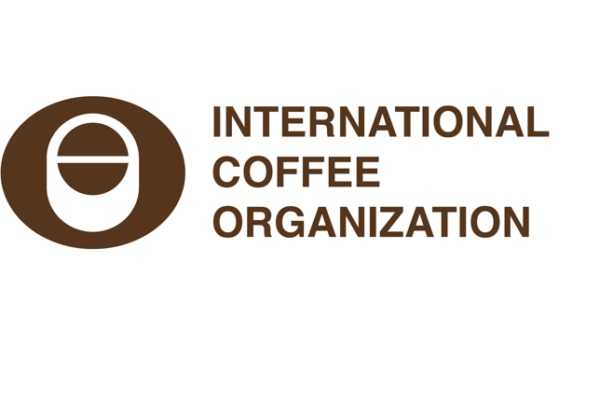LONDON, UK – According to ICO’s Coffee Market Report, the ICO Composite Indicator Price (I-CIP) averaged 226.83 US cents/lb in June, an 8.9% increase from May 2024. The I-CIP posted a median value of 225.70 US cents/lb, and fluctuated between 221.71 and 235.69 US cents/lb. The June 2024 I-CIP is above the June 2023 I-CIP by 32.5%, with the 12-month rolling average at 179.39 US cents/lb.
Following the sharp dip and subsequent increase observed in May 2024, the I-CIP remained relatively stable and on an upward trend in June 2024, around the 220 US cents/lb mark. This stability, as compared with May, was due to large adjustments in the previous month, taking the steam out of the market, and leaving it in no mood for further animation so soon.
The upward trend, on the other hand, is mainly due to the fundamentals, especially taking into account the possibility of poor harvests in Vietnam and Indonesia in coffee year 2024/25.
Furthermore, the readjusted bumper crop in Brazil for 2024/25 may be lower than expected, overhanging the market. Thus, emerging negative factors such as the strengthening Brazilian real – appreciating from 5.2320 BRL to USD on 1 June to 5.5544 BRL by the end of the month – were largely overridden, leaving the I-CIP to meander on its upward trend.
The Colombian Milds and Other Milds increased by 7.2% and 7.0%, reaching 250.39 and 248.39 US cents/lb, respectively, in June 2024. The Robustas presented the strongest growth amongst all coffee groups, at 10.5%, reaching an average of 204.30 US cents/lb. The Brazilian Naturals also grew by 9.3% to 229.25 US cents/lb in June 2024. ICE’s London market was also a strong driver of growth, expanding by 10.7% to 182.82 US cents/lb, whilst the New York Futures market grew by 8.4% to 226.42 US cents/lb.
The Colombian Milds–Other Milds differential expanded from 1.39 to 2.00 US cents/lb. The Colombian Milds–Brazilian Naturals differential contracted 10.9% to 21.13 US cents/lb, whilst the Colombian Milds–Robustas differential also shrank 5.0% from May to June 2024, averaging 46.08 US cents/lb.
Meanwhile, the Other Milds–Brazilian Naturals and Other Milds–Robustas differential contracted 14.3% and 6.5% reaching 19.13 and 44.08 US cents/lb, respectively. The Brazilian Naturals–Robustas differential expanded 0.6%, averaging 24.95 US cents/lb in June 2024.
The arbitrage, as measured between the London and New York Futures markets, contracted 0.3% to 43.60 US cents/lb in June 2024.
The intra-day volatility of the I-CIP remained stable at 12.3% between May and June 2024. The Colombian Milds’ volatility decreased by 0.4 percentage points. However, the Other Milds’ volatility and the Brazilian Naturals’ volatility both grew by 0.1 percentage points to 12.0% and 13.1%, respectively, from May to June 2024.
The Robustas presented the highest volatility among the different coffee groups, declining to an average volatility of 13.8% for the month of June. The London futures market’s volatility also increased by 1.1 percentage points to 16.6%. Lastly, the New York futures market’s volatility remained stable, at 13.4%.
The London certified stocks continued to expand in June 2024, increasing by 24.3% to 0.97 million bags. Certified stocks of Arabica coffee reached 0.86 million 60-kg bags, a 2.8% increase versus May 2024. Whilst stocks are building up again, they remain below June 2023 levels, i.e. 1.85 million bags.
Exports by Coffee Groups – Green Beans
Global green bean exports in May 2024 totalled 10.76 million bags, as compared with 9.61 million bags in the same month of the previous year, up 12.0%. As a result, the cumulative total for coffee year 2023/24 to May is 84.02 million bags, as compared with 75.31 million bags over the same period a year ago, an increase of 11.6%. The Brazilian Naturals, once again, were the main group responsible for the overall strong growth observed in May 2024, accounting for 118.4% of the 1.15-million-bag net gain in total exports.
Exports of the Colombian Milds increased by 10.0% to 1.01 million bags in May 2024 from 0.91 million bags in May 2023. As a result, exports of the Colombian Milds for the first eight months of coffee year 2023/24 are up 10.6% at 8.11 million bags, as compared with 7.34 million bags in the first eight months of coffee year 2022/23.
The latest uptick in the exports was driven by Colombia, the group’s largest producer and exporter, with its May 2024 exports up 10.6% to 0.94 million bags as compared with 0.85 million bags in May 2023. The cumulative total for the origin is 7.85 million bags, up 9.4% versus the 7.17 million bags exported in October 2022 to May 2023.
Benefitting from improved weather conditions, the recovery of Colombia’s production explains the strength and growth of its exports, although the cumulative export volume is still significantly down versus the recent past. The average exports for October–May in 2017/18–2021/22 amounted to 8.56 million bags, while the 2023/24 production is estimated to be up 18% to 12.53 million bags from 10.62 million bags in 2022/23.
Shipments of the Other Milds increased by 1.2% in May 2024 to 2.57 million bags from 2.54 million bags in the same period last year. This is only the second instance of positive growth since the beginning of the current coffee year, with the first coming in at the start. As a result, the growth rate of the cumulative volume increased to 0.7% in the first eight months of coffee year 2023/24 to 14.39 million bags, from 0.6% for the first seven months.
Green bean exports of the Brazilian Naturals increased in May 2024, rising by 56.1% to 3.8 million bags from 2.43 million bags in May 2023. For the first eight months of coffee year 2023/24, green bean exports of the Brazilian Naturals amounted to 29.02 million bags, up 24.8% from 23.26 million bags over the same period a year ago. The sharp positive growth rate stems from the 59.2% increase in exports of the Brazilian Naturals from Brazil, the biggest producer and exporter of this group of coffee, which rose to 3.13 million bags in May 2024 from 1.96 million bags in May 2023.
Green bean exports of the Robustas were down 13.4% to 3.39 million bags in May 2024 from 3.73 million bags in May 2023. The cumulative total for the first eight months of coffee year 2023/24 is up 6.8%, at 32.5 million bags, as compared with 30.43 million bags in the first eight months of coffee year 2022/23. The main driver of May’s decrease in Robusta exports was Vietnam, which shipped 1.26 million bags as compared with 2.37 million bags in May 2023, down 46.8%.
The downturn was more than sufficient to overwhelm the 248.2% increase in Brazil’s exports, shipping 1.01 million bags in May 2024 as compared with 0.3 million bags in May 2023. For the year to date, Brazil’s green Robustas exports amount to 5.46 million bags, the largest on record, 2.03 million bags more than the next highest at 3.43 million bags, recorded between October 2014 and May 2015.
Exports by Regions – All Forms of Coffee
Exports of all forms of coffee from Asia & Oceania decreased by 39.3% to 2.42 million bags in May 2024. The latest downturn is the sixth in total and fourth consecutive monthly decline observed in the region for the current coffee year, with the cumulative total falling by 7.2% to 29.93 million bags as compared to 32.24 million bags in the same period a year ago. Once again, the region’s general direction was dictated by Vietnam, Asia & Oceania’s largest producer and exporter of coffee, whose exports fell by 46.9% in May 2024 to 1.36 million bags. These are the lowest May exports since the 1.17 million bags shipped in 2010.
The latest downturn marked the sixth in total and fourth consecutive decline for Vietnam in coffee year 2023/24, and as a result the country’s cumulative exports up to May 2024 fell to 20.28 million bags from 21.71 million bags between October 2022 and May 2023, down 6.6%. The dramatic decrease is reported as a consequence of the country’s low levels of stocks, which were used in recent months to support a relatively robust volume of exports, but are now near depleted.
The domestic industry is waiting for new supply from the 2024/25 harvest, still three months away. Adding to the latest setback for the region was Indonesia, with its exports decreasing by 67.1% to 0.2 million bags from 0.62 million bags in May 2023.
The low absolute volume of exports (the average size of the May exports was 0.47 million bags for 2019–2023) is due to the shortage of local supply caused by the poor harvest in coffee year 2023/24, which is estimated at 10.0 million bags as compared with 11.98 million bags in the previous coffee year. The magnitude, on the other hand, is due to a non-favourable base effect; the 0.62 million bags exported in 2023 represent the fourth largest exports on record.
Exports of all forms of coffee from Africa increased by 44.8% to 1.74 million bags in May 2024 from 1.21 million bags in May 2023. As a result, the cumulative total of 9.28 million bags for the first eight months of coffee year 2023/24 is up 10.9%, as compared with the 8.37 million bags shipped in coffee year 2022/23. Côte d’Ivoire, Ethiopia and Uganda were the driving forces behind the region’s growth in May 2024, with their exports having increased by 119.4%, 97.1% and 22.1%, respectively, to 0.21 million bags, 0.69 million bags and 0.55 million bags as compared with 0.1 million bags, 0.35 million bags and 0.45 million bags in May 2023.
The Uganda Coffee Development Authority reported the arrival of the newly harvested main crop from Masaka and Southwestern regions as the reason behind the strong growth in May 2024. Ethiopia’s rebound is a due to a continued comparative normalization of market circumstances. Contract disputes arising from a mismatch between local purchasing prices and global market prices had affected the volume of exports in the first half of calendar year 2023.
More recently, Ethiopia’s exports were also affected by the lack of ships available at Djibouti, the main point of exit for the landlocked country’s goods, due to the insecurities around the Red Sea. By way of example, while at least one vessel was available per day previously, this has now reduced to one per month. However, on 28 March 2024, Maersk, one of the largest shipping companies in the world, released a statement lifting its suspension of all bookings to and from Djibouti, which was implemented on 30 January 2024.
In May 2024, South America’s exports of all forms of coffee increased by 59.6% to 5.54 million bags. As a result, the cumulative total of 44.28 million bags for the first eight months of coffee year 2023/24 is up 33.7% as compared with the 33.1 million bags shipped in coffee year 2022/23.
The source of the strong positive growth is Brazil, which saw its exports increase by 79.1% in May 2024 to 4.42 million bags from 2.46 million bags in May 2023. These are the largest exports on record for the month of May, beating the previous high of 3.89 million bags observed in 2019.
Moreover, they are also the largest monthly exports ever recorded. Fundamentally, the strong export performance of both Brazil and South America reflects the former’s good harvests in coffee years 2022/23 and 2023/24, which are estimated to be up by 8.4% and 9.2%, respectively. In addition, Brazil is continuing to fill the demand gap caused by reduced Robustas exports from Vietnam and Indonesia (see Exports by Coffee Groups – Green Beans).
In May 2024, exports of all forms of coffee from Mexico & Central America were up 0.2% to 2.074 million bags, as compared with 2.069 million in May 2023. As a result, while the cumulative total exports remain down at −6.4%, decreasing to 9.25 million bags, as compared with 9.85 million bags for the same period a year ago (October to May).
The marginal May 2024 increase in the region’s exports is mainly a reflection of a confluence of positive growth in Guatemala (21.0%) and Mexico (25.2%) outweighing the negative growth of El Salvador (11.8%), Honduras (6.4%) and Nicaragua (24.6%).
Exports from Honduras continue to be hampered by its off-years in the biennial production cycle, while Nicaragua is still working its way through the fallout from the bankruptcy of Mercon Coffee Group in December 2023, a coffee trader and the owner of CISA Exportadora, a company responsible for more than half of Nicaragua’s coffee exports. Much of Mexico’s May 2024 increase was due to its exports of soluble coffee, which were up 61.7% to 0.13 million bags from 0.08 million bags.
Exports of Coffee by Forms
Total exports of soluble coffee decreased by 11.3% in May 2024 to 0.95 million bags from 1.07 million bags in May 2023. In the first eight months of coffee year 2023/24, a total of 8.24 million bags of soluble coffee was exported, representing an increase of 5.1% from the 7.84 million bags exported in the same period during the previous coffee year.
Soluble coffee’s share in the total exports of all forms of coffee for the year to date was 8.9% in May 2024, down from 9.4% in the same period a year ago. Brazil was the largest exporter of soluble coffee in May 2024, shipping 0.38 million bags.
Exports of roasted beans were up 29.8% in May 2024 to 68,167 bags, as compared with 52,524 bags in May 2023. The cumulative total for coffee year 2023/24 to May 2024 is 0.48 million bags, as compared with 0.46 million bags in same period a year ago.


















